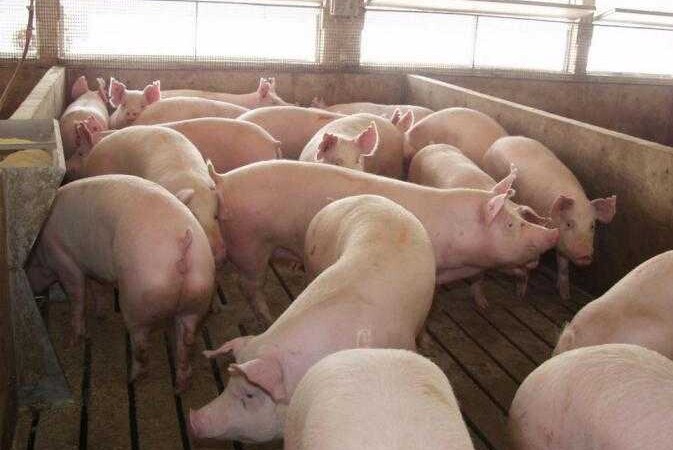

Due to its primary effect on feed intake, the thermal environment can have a tremendous effect on both growth rate and feed efficiency in growing pigs. Thus, the thermal environment also can affect the composition of gain. Pigs exposed to extremely cold temperatures will consume excessive quantities of feed in an effort to offset heat loss and maintain normal body temperature.
At the other extreme, during heat stress, feed intake is decreased in order to reduce the heat production associated with the digestion and metabolism of nutrients. Because of this relationship, swine diet formulations should be adjusted to account for the variations in feed intake (just like between sexes) associated with environmental temperature changes.
Most published nutrient and diet recommendations are intended for pigs being raised in their thermoneutral (comfort) zone. However, when pigs are exposed to temperatures outside their thermoneutral zone for prolonged periods of time, the concentration of nutrients in the diet will need to be adjusted. For example, due to the increase in feed intake, pigs housed in a cold environment will consume more lysine than is needed for maximum lean growth rate unless the level of lysine in the diet is reduced. On the other hand, during the hot summer months (when feed intake is reduced) pigs will not consume sufficient amounts of lysine for normal lean gain to occur unless the concentration of lysine in the diet is increased.
Cold Environments
Research findings indicate that if pigs are maintained in a sufficiently cold environment (below approximately 50°F for 50 lb pigs and 40°F for finishing pigs), the concentration of lysine in the diet can be reduced by about 0.1 percentage unit. In a typical diet containing corn and soybean meal, reducing dietary lysine by 0.1 percentage unit is equivalent to reducing crude protein by 1.3 percentage units. It is important to note that this finding is only applicable to continuous cold exposure.
If diets are reformulated to a lower lysine level and temperatures rise into the pigs’ thermoneutral zone (60° to 75°F), feed intake will decrease, resulting in reduced lysine intake. Therefore, lower lysine diets should not be mixed and fed unless cold conditions are expected to persist for a prolonged period of time.
Hot Environments
During the hot months, feed intake may be depressed enough by prolonged high temperatures to limit lysine intake unless diets are adjusted to contain higher levels of lysine. As a rule of thumb, research would indicate that when growing-finishing pigs are exposed to prolonged periods of temperatures between 80° and 90°F, the level of lysine in the diet should be increased by 0.1 percentage unit.
To increase the lysine content of a corn-soybean meal based diet by 0.1 percentage unit, the crude protein level can be raised by 1.3 percentage units. As was the case with cold temperatures, this would only apply to continuous exposure to temperatures ranging from 80° to 90°F. If diets are reformulated to a higher lysine content and temperatures fall back into the pig’s zone of thermoneutrality, feed intake will increase and the pig will consume more lysine than needed. While the extra lysine will most likely not have an adverse effect on pig performance, it will result in a higher than necessary feed cost.
If temperatures above 90°F are experienced for an extended period of time, feed intake will be reduced dramatically and the pig’s ability to respond to increased dietary lysine will be diminished. In this case, energy intake is more limiting than lysine intake. Using all available methods to keep the pig cool is the best approach to minimize the reduction in feed intake associated with extremely hot weather.
 Contact Jaguza Support
Contact Jaguza Support